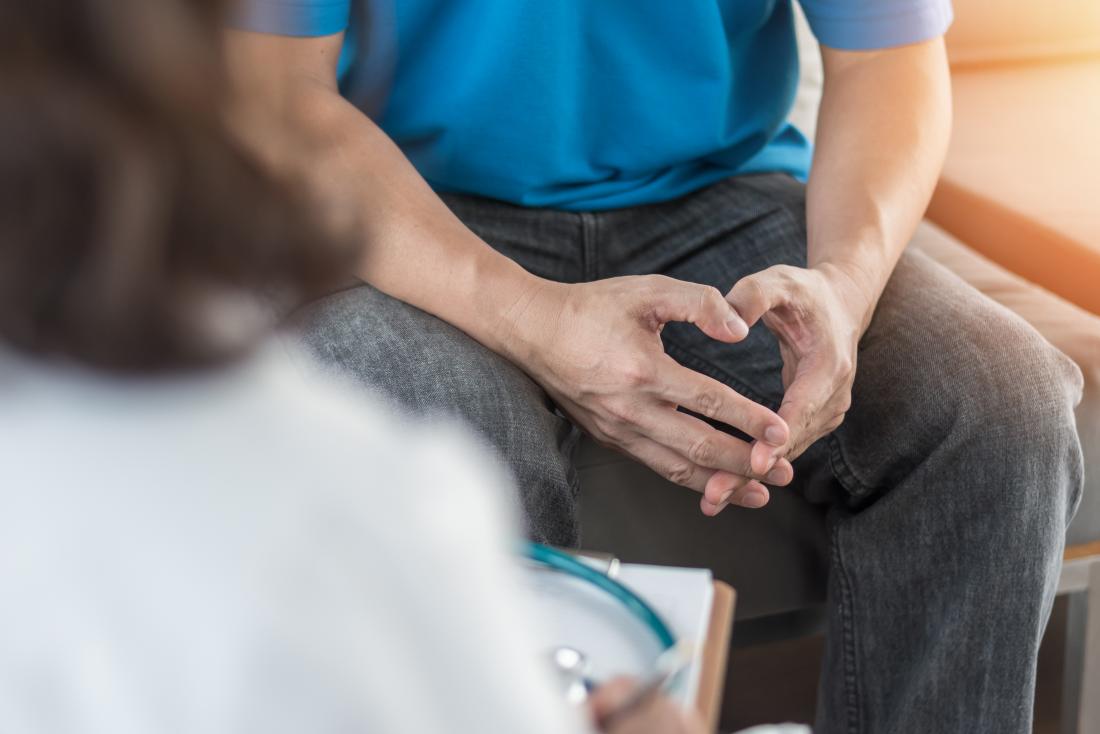Chlamydia is a sexually transmitted infection (STI) that the bacterium Chlamydia trachomatis causes. According to the Centers for Disease Control and Prevention (CDC), chlamydia is the STI that people in the United States report most frequently. Chlamydia is especially common in young adults up to the age of 24 years.
People can contract chlamydia by not using a condom during anal, oral, or vaginal intercourse with someone who has this STI.
Risk factors that may increase a person’s chances of contracting chlamydia include:
- becoming sexually active before the age of 25 years
- having multiple sexual partners
- engaging in sex without a condom
- having a history of previous STIs
In this article, we explain the symptoms and complications of male chlamydial urethritis. We also cover diagnosis, treatment, and prevention.
Symptoms

Symptoms of chlamydia in men include painful urination and ejaculation.
Many males who have chlamydia do not have any symptoms. If symptoms do appear, they typically present within 1 to 3 weeks of contracting the STI.
Symptoms that may indicate chlamydial urethritis include:
- thick, milky, or clear penile discharge
- painful or difficult urination, also known as dysuria
- painful ejaculation
- itching or swelling of the penis
- pain or swelling of the testicles
- soreness or irritation of the tip of the penis
Complications
Without treatment, chlamydial urethritis can lead to severe health complications.
Men who have a history of chlamydial infection or other STIs have a considerably higher risk of contracting HIV.
Chlamydial infections can progress from the urethra to the epididymis, which sits behind each testicle. It is a tube that stores sperm and carries it from the testicles to the vas deferens. The vas deferens is a duct that transports sperm from the epididymis to the urethra.
If the infection spreads to the epididymis, it can cause inflammation in this area and lead to a condition called epididymitis. People who have epididymitis typically experience discomfort or pain in their scrotum or testicle.
Another possible complication of chlamydial urethritis is reactive arthritis, a condition that was formerly known as Reiter’s syndrome. Reactive arthritis causes swelling and pain in the body’s joints and usually results from a bacterial infection, such as chlamydia.
According to the National Organization for Rare Disorders, C. trachomatis is the most common cause of reactive arthritis in the U.S., and the most common way to contract it is through sexual activity.
Reactive arthritis typically affects the knees and ankles, but people can also experience symptoms in their toes, fingers, and lower back.
The symptoms of reactive arthritis include:
- redness, swelling, and pain in and around the affected joints
- pain in the lower back
- pain in the heels
- inflammation of the urinary tract
- inflammation in the eyes or eyelids
- fever
- weight loss
Diagnosis

A doctor may recommend a urethral swab to diagnose chlamydial urethritis.
Various laboratory tests are available to diagnose chlamydial urethritis.
In most cases, healthcare professionals will send a person’s urine or urethral swab sample to a laboratory for analysis. Lab technicians check for the presence of C. trachomatis in the sample using a procedure called nucleic acid amplification testing (NAAT), which can detect the DNA or RNA of this bacterium.
NAAT is a very accurate method of diagnosing chlamydial urethritis.
Healthcare professionals may also use gram staining on the sample to rule out a concurrent gonorrheal infection. Gonorrhea is a gram-negative STI that produces symptoms similar to those of chlamydia.
In rare cases, healthcare professionals may perform cell-culture testing to look for bacterial growth. However, because of the accuracy of diagnosis with NAAT and the existence of various factors that could affect the cell-culture results, this is not a standard test for diagnosing C. trachomatis infection.
Chlamydia urethritis is contagious, which means that a person can pass the infection on to other people. Anyone who receives a chlamydia diagnosis should inform any previous or current sexual partners so they also undergo tests for the STI and receive treatment if necessary.
Treatment
Doctors typically prescribe an oral antibiotic therapy, such as azithromycin or doxycycline, to treat people with chlamydial urethritis. Antibiotics are medications that fight bacterial infections, and they are highly effective in the treatment of chlamydia.
The current and previous sexual partners of someone with chlamydia may also need treatment.
Doctors generally prescribe one of the following treatments:
- a 7-day course of the antibiotic doxycycline
- a single, standalone dose of the antibiotic azithromycin
When taking antibiotics, it is essential to follow the doctor’s instructions and complete the full course. People who are not confident that they will be able to follow the entire course of antibiotics may have the option to take a single dose of an antibiotic under medical supervision.
People undergoing treatment for chlamydia should abstain from sexual intercourse for at least 7 days after they have completed their prescribed course of antibiotics. By doing this, they will reduce the risk of both spreading the infection to other people and becoming re-infected.
Prevention
A person can contract and pass on chlamydia through vaginal, anal, or oral sex. It is possible to reduce the risk of chlamydia transmission by:
- using a condom during sex
- having annual health checks for chlamydia if sexually active
- informing any previous and current sexual partners about an STI diagnosis
- avoiding any sex for at least a week after finishing treatment for chlamydia
Takeaway
Male chlamydial urethritis results from a bacterial infection and causes inflammation of the urethra. This STI can cause pain and discomfort, but some people will not experience any symptoms. Without treatment, chlamydia can lead to serious health complications.
Doctors usually prescribe oral antibiotics to treat people with chlamydial urethritis. Although antibiotics are a highly effective treatment for chlamydia, it is essential that people follow their doctor’s instructions when taking this type of medication and complete the full course.
People can help prevent STIs, such as chlamydia, by using a condom and getting regular tests.
